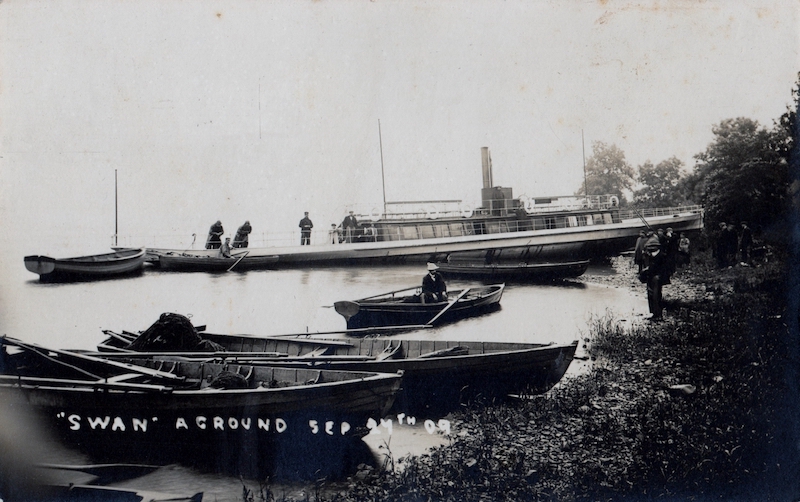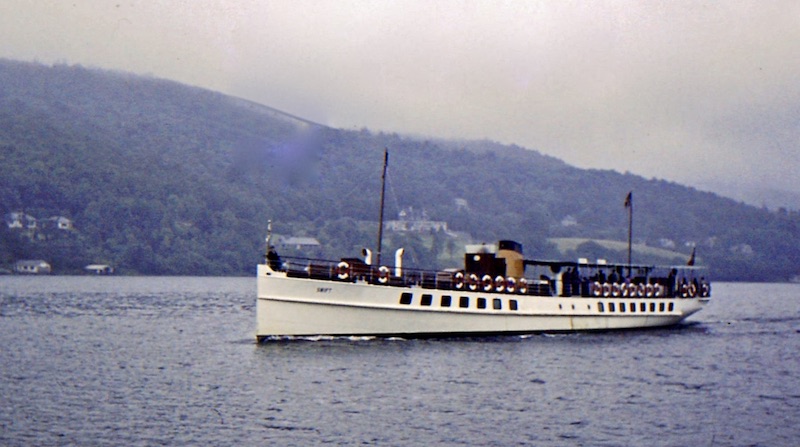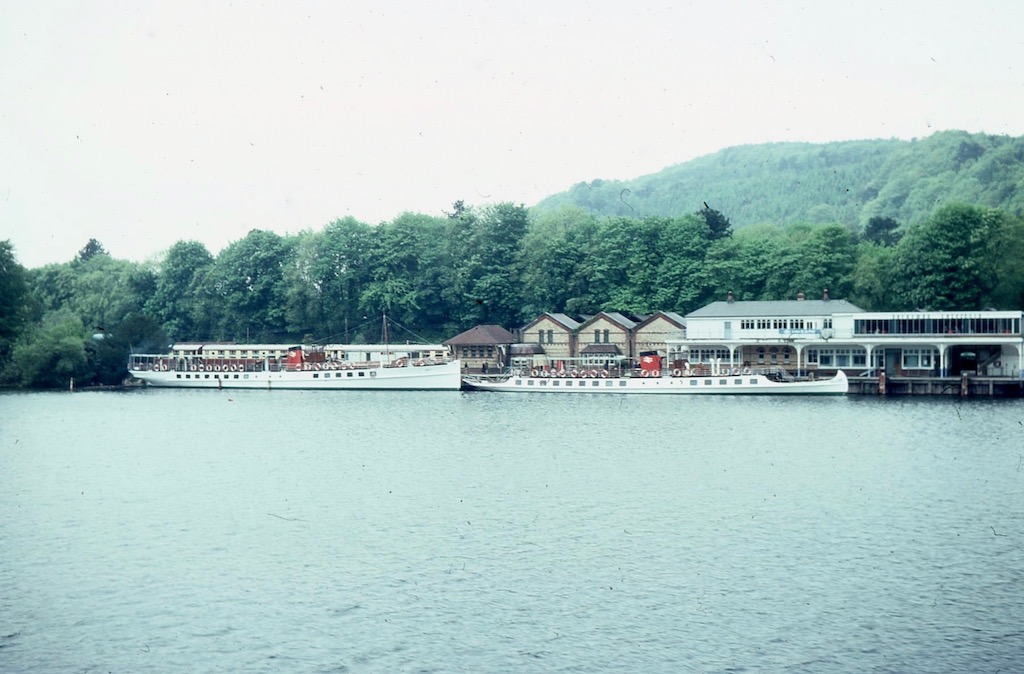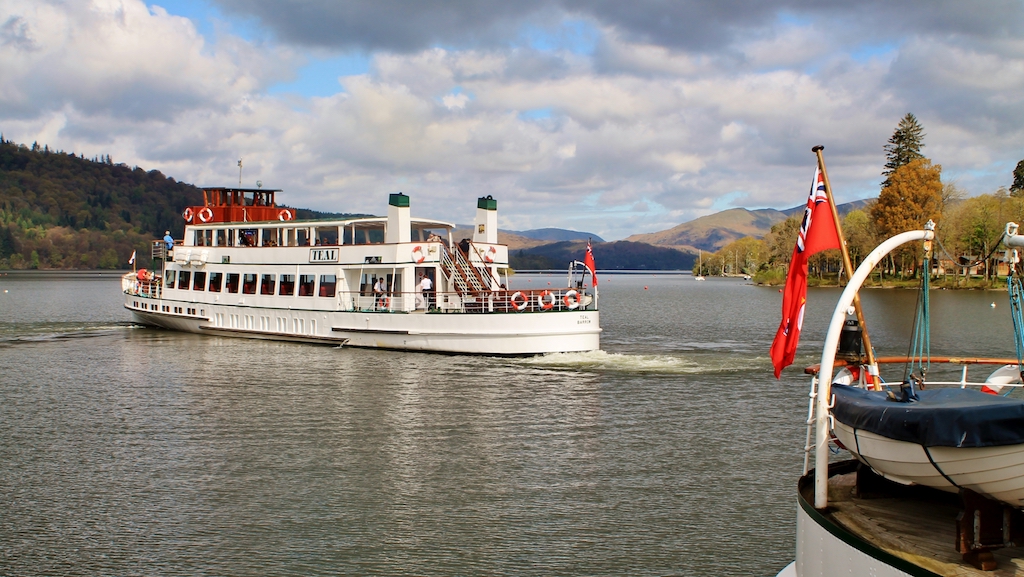
An early start to the 2018 season on Lake Windermere: Teal leaves Bowness, with the stern of Swan also in view. Fresh from their winter overhaul at the Lakeside terminus, both vessels will be kept busy until November. The twin uptakes were a late 1990s addition. Copyright Rob Beale
April is the month when Lake Windermere’s fleet of 16 pleasure craft returns to full force after the long winter months of slumber and maintenance. As one of the fleet’s skippers, CRSC member Rob Beale sees the vessels in all seasons and different states of upkeep. Here he looks forward to another summer on the lake.
In the late 1930s the London Midland and Scottish Railway ordered three broadly similar vessels for its inland waterway services — Teal (1936) and Swan (1938) for Lake Windermere, Countess of Breadalbane (1936) for Loch Awe.
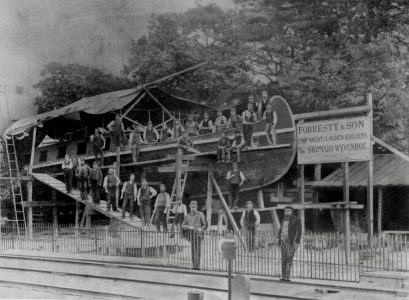
Tern was built at Wivenhoe, Essex, in a dry dock using wooden pegs instead of rivets, before being transported by rail to Lakeside and rebuilt using rivets. She is pictured being assembled at Lakeside in 1891. Courtesy of Rob Beale Collection
All three were constructed at their builders’ yards on the British coastline — the two Windermere boats at Barrow, the ‘Breadalbane’ at Dumbarton — before being dismantled, transported in sections to the shore of the waterway where they were to operate, and then reassembled. None was built with a funnel, but all had a pleasing design that was adapted later in life to suit the changing demands of their role.
The ‘Breadalbane’ had the most varied career, serving on two fresh water Scottish lochs as well as the open sea, but also the shortest life — she was broken up in 1999 — whereas the two Windermere vessels are still plying their trade on the waters for which they were originally intended.
The Windermere fleet consists of three large passenger vessels and 13 smaller boats. Last year they notched up 1.8m passenger journeys. Along with Swan and Teal, the stately Tern (1891) sails daily during the summer season and spends the other five months of the year receiving some TLC at Lakeside at the southern end of the lake, where each of the Windermere vessels is hauled out of the lake in turn for below-the-waterline care.
This past couple of years has seen major upgrades to the two larger vessels: Teal received a new generator and wheelhouse last year, and Swan has just completed a similar refit. It is hoped that Tern will follow suit next winter. Lakeside is a hive of activity during the cold, wet and dark winter. As well as the maintenance programme for the larger vessels, the four wooden launches still in the fleet are craned out of the water and a tent built around them to have their woodwork scraped, sanded and varnished to make them look spick and span for new season.
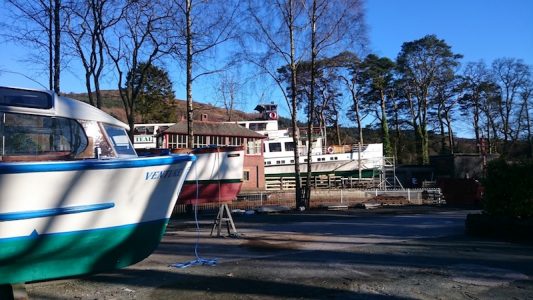
‘I find Lakeside a great place to work’: winter scene at Windermere. Starting in November the lake’s pleasure boats take it in turns to be hauled up for maintenance and renewal. Copyright Rob Beale
As a shipping enthusiast I find Lakeside a great place to work, because you are taking care of historic passenger vessels. After maintenance has finished in late March we are always ready to enjoy a nice warm summer sailing on the lake for seven months before it all starts again in early November.
Although none of the present Windermere fleet was built on the Clyde, there have been numerous Clyde-built vessels on the lake over the past 150 years. Thomas Seath of Rutherglen built the privately owned Fairy Queen (1860), the railway steamer Swan (1869), the railway cargo steamer Raven (1871) and also Britannia (1879) — initially privately owned and run by the Furness Railway from 1908. There was also the elegant Swift (1900), a railway steamer that was withdrawn in 1981 and broken up in 1998. Seath also built two boats for Ullswater — Lady of the Lake (1877) and Raven (1899).
There is one boat working on Windermere, Miss Cumbria IV, with which Scottish readers may be familiar. Built in 1988 in the Netherlands and initially named Sir William Wallace, she spent her inaugural season running from the Broomielaw to the Clyde Garden Festival, and subsequently gave cruises from Glasgow to Govan, Renfrew, Clydebank, Newshot Isle and the Erskine Bridge. Despite relocating to Windermere in 1991, she still has her Greenock registration painted on her stern.
It is possible to take a trip on Windermere every day of the year except for Christmas Day. You can sail the entire length of the lake all the time, except Monday to Friday in January, when the ‘Yellow Cruise’ (Bowness to Lakeside) does not run. The waterbuses sail all winter, with one of the steamers coming out on nice Saturdays and at holiday periods. The 2018 summer season is already underway, with all the boats now in commission.
Click here for details of the 2018 Lake Windermere cruise programme.

Links to Glasgow: Miss Cumbria IV, which began her career ferrying passengers down the Clyde in 1988, was later transferred to Lake Windermere. Judging by this recent photo, she offers ample open deck space for excursionists, while also providing plenty of covered accommodation from which to admire the lake scenery. Copyright Rob Beale
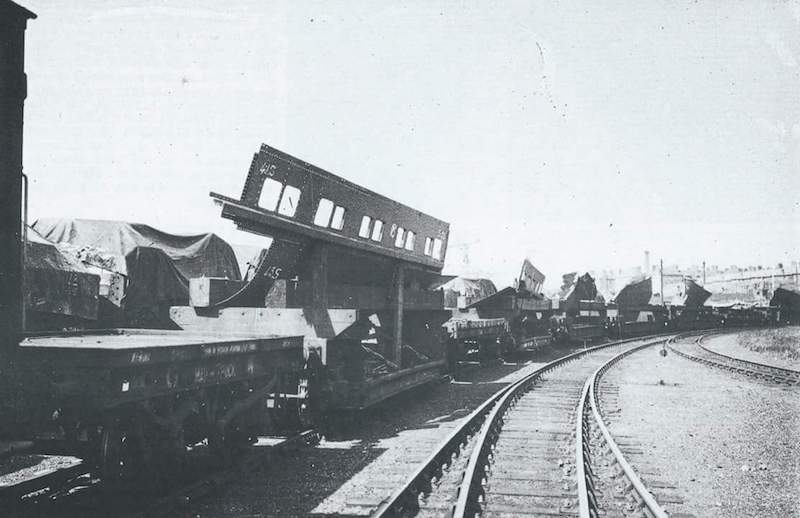
Teal leaving Barrow in sections in 1936, to be reassembled at Lakeside. Courtesy of Rob Beale Collection
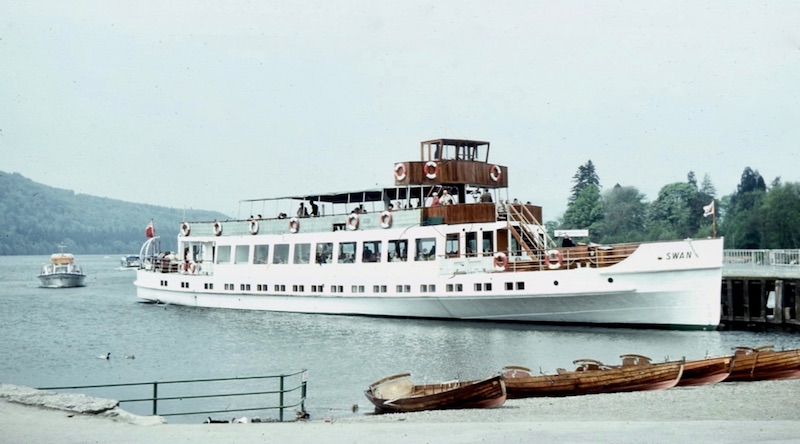
Swan at Bowness in 1976. In the 2017-18 winter she received a new wheelhouse and generator. Copyright C. Kennedy Mills
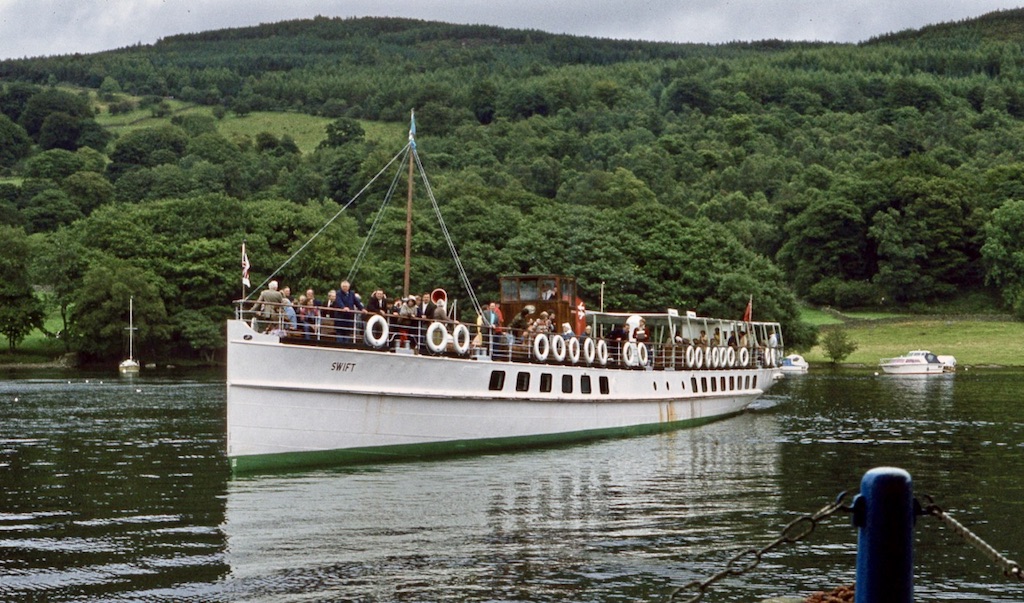
Swift turning at Lakeside on 22 August 1981, in her last month of service. Courtesy of Robert Beale Collection

Tern in August 1975, entering Waterhead Bay with the Low Wood Hotel behind. Copyright CRSC Dr Joe McKendrick Collection
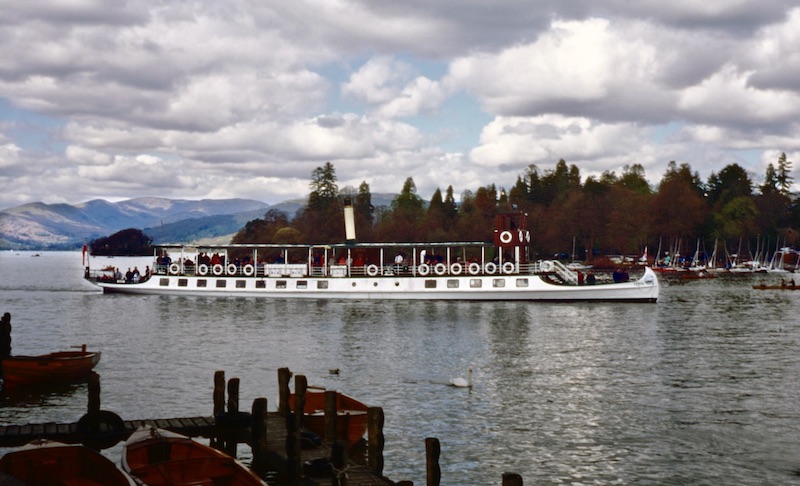
A more recent photograph of Tern, showing her approaching Bowness in her present condition. Copyright CRSC
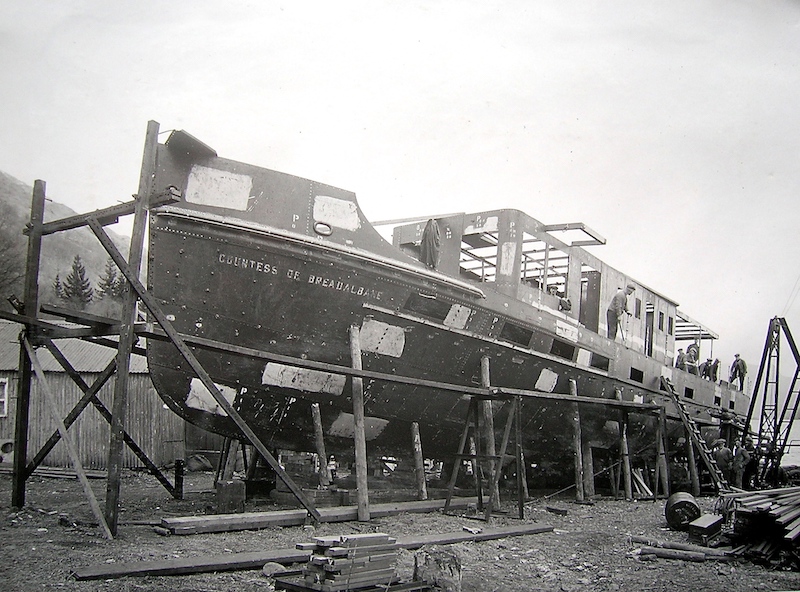
LMS family likeness? Countess of Breadalbane under construction at Loch Awe in 1936. Like Teal and Swan, her near contemporaries on Lake Windermere, the ‘Breadalbane’ originally had no funnel but was given one later in life — in her case on Loch Lomond, where she was eventually broken up in 1999. As built, the exhausts on Teal and Swan were also on the side of the hull, but in the late 1990s Windermere Lake Cruises fitted two small uptakes to each vessel at the aft end of the upper deck. Copyright CRSC Archive Collection
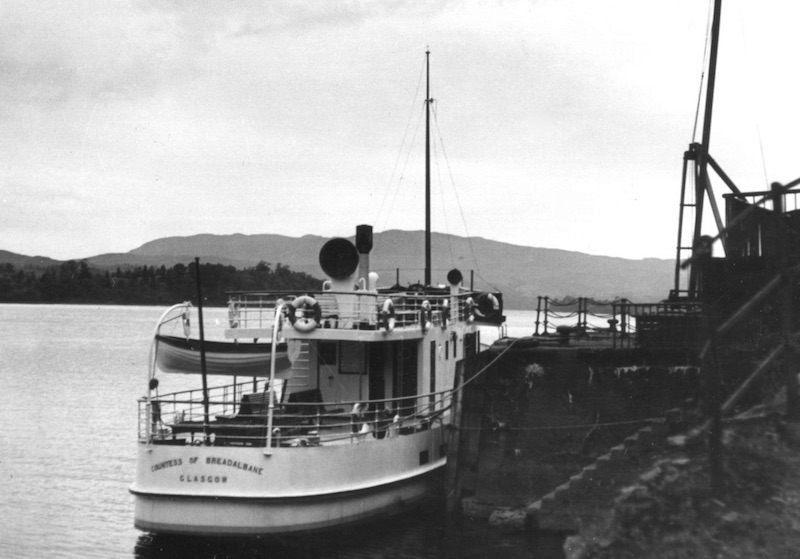
Countess of Breadalbane on Loch Awe in 1936, her first year of service. Copyright CRSC Archive Collection
Read Robin Copland’s appreciation of a Windermere cruise.
Have you joined CRSC? Pay £10 and get full benefits for the first year — click here.












